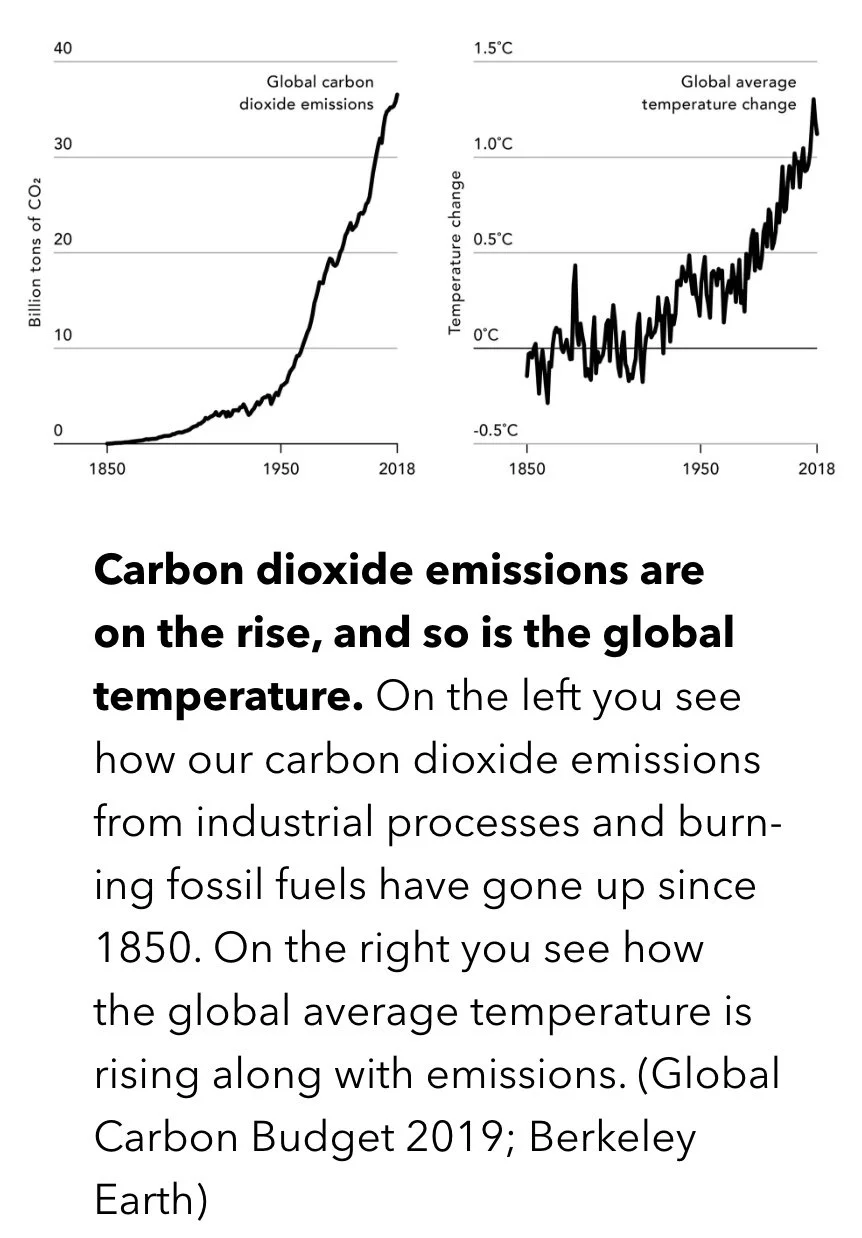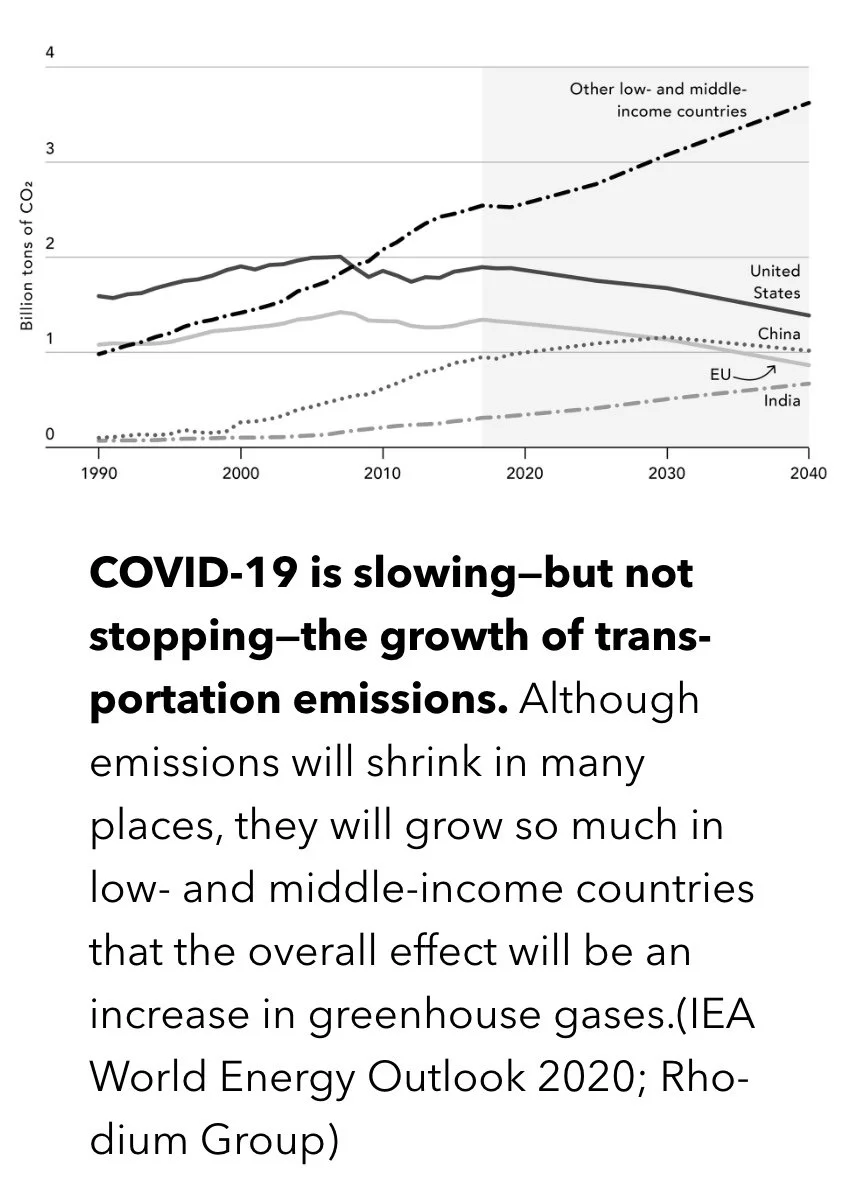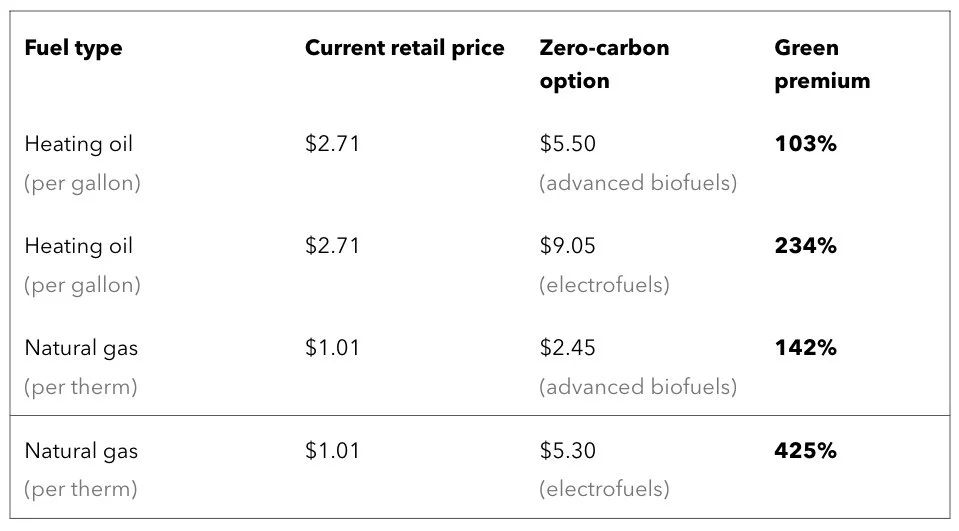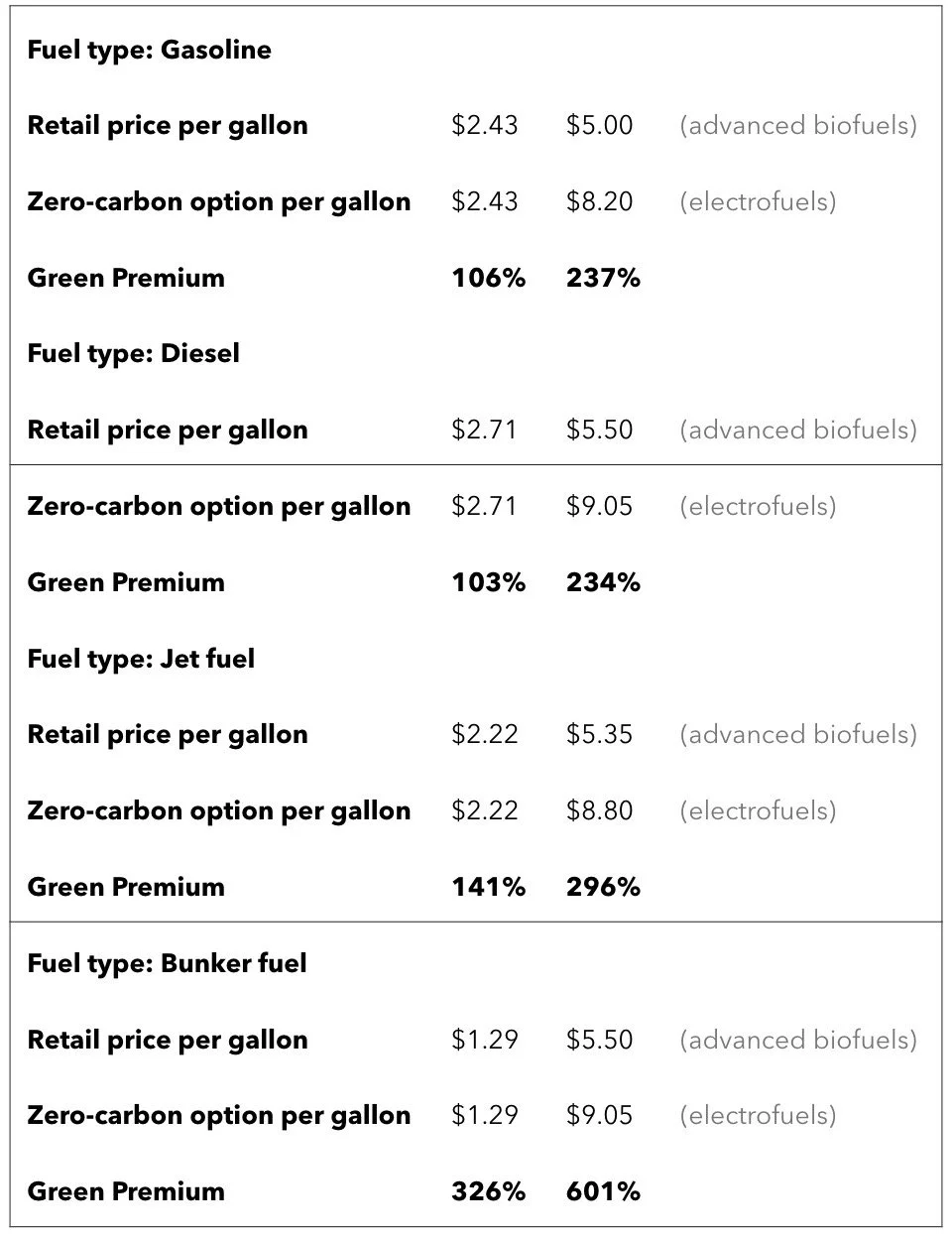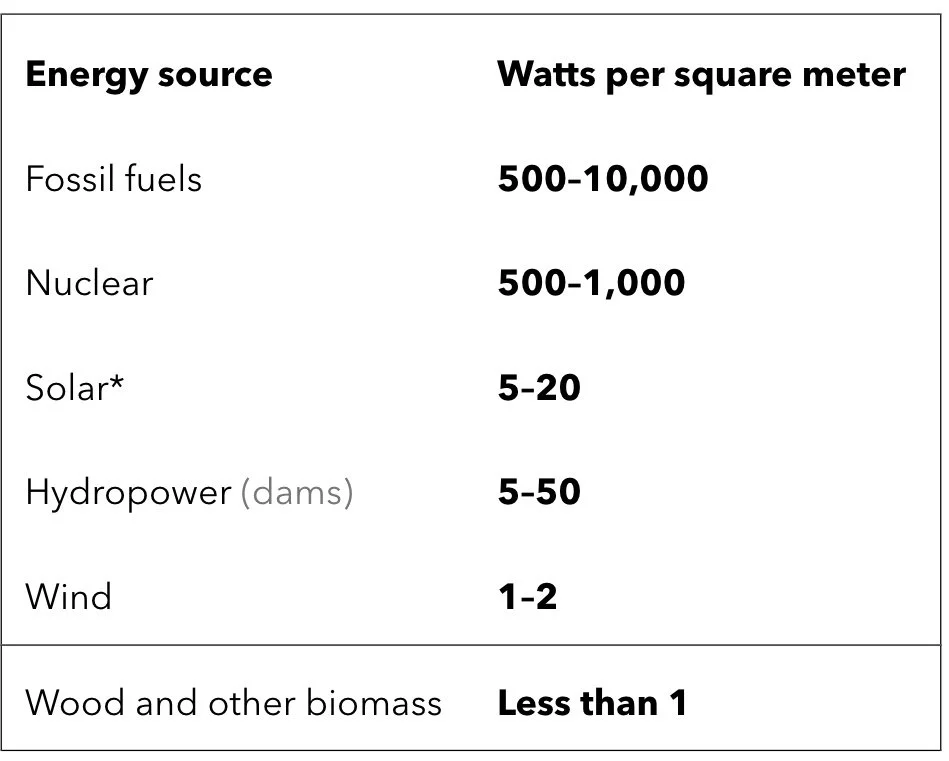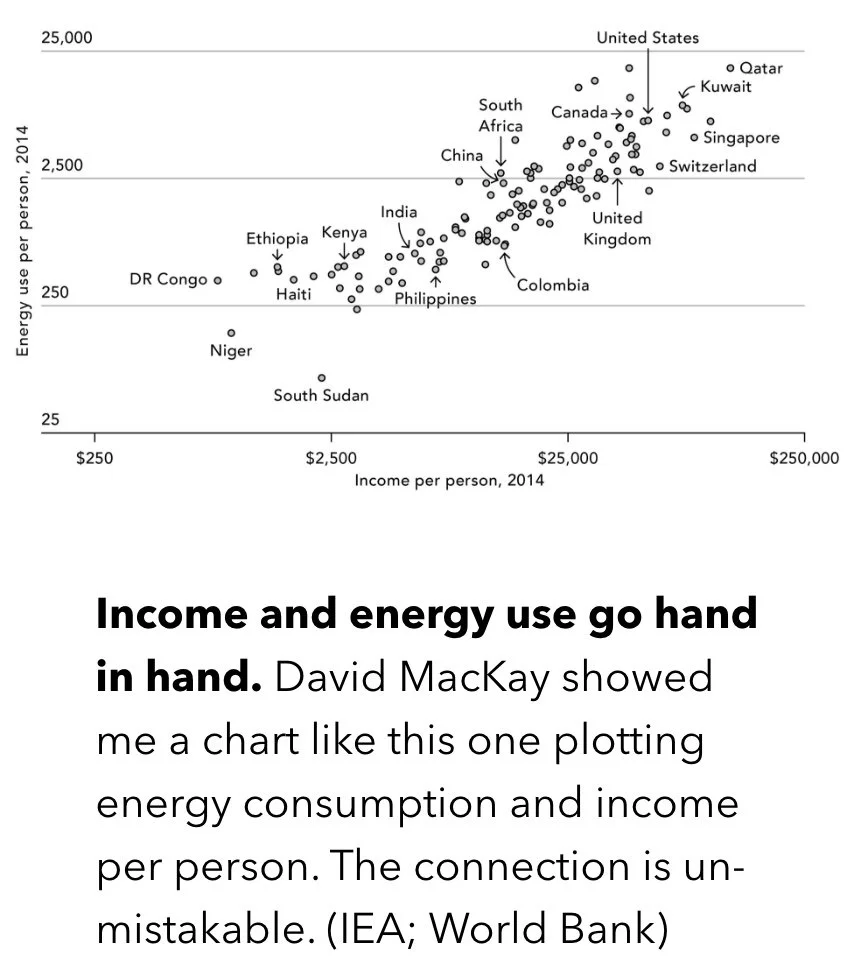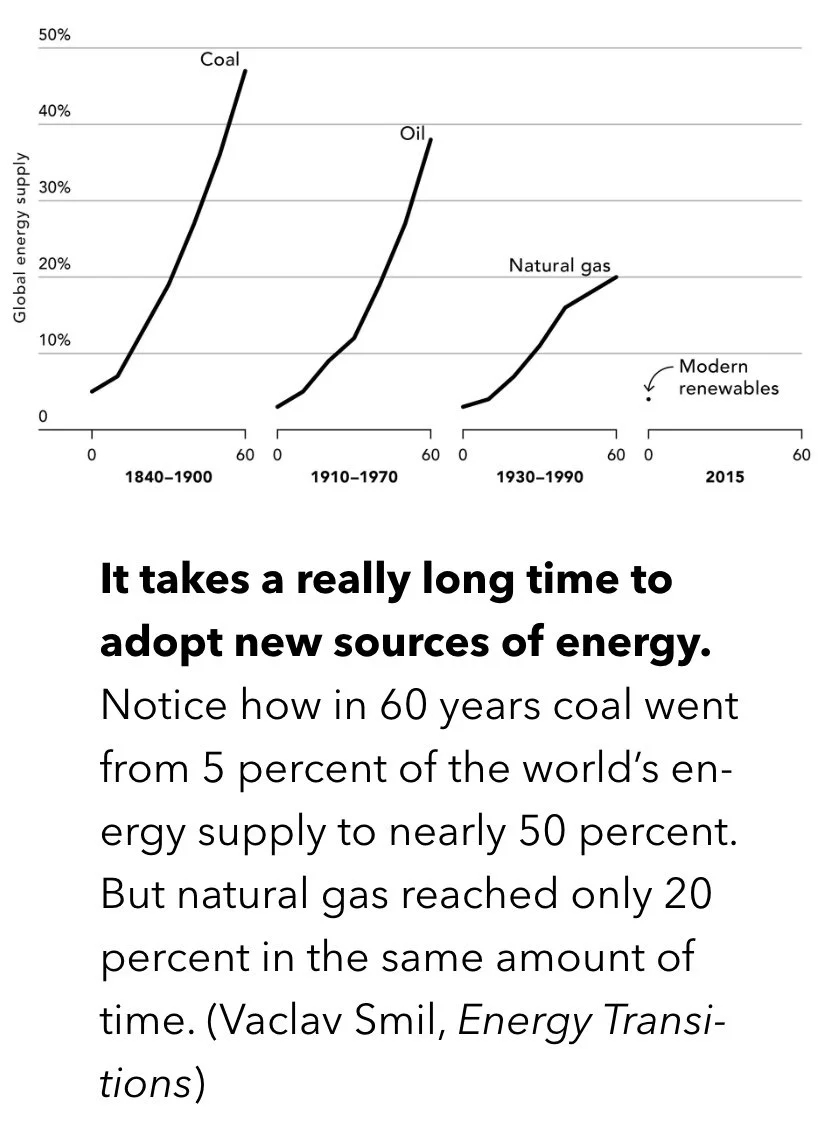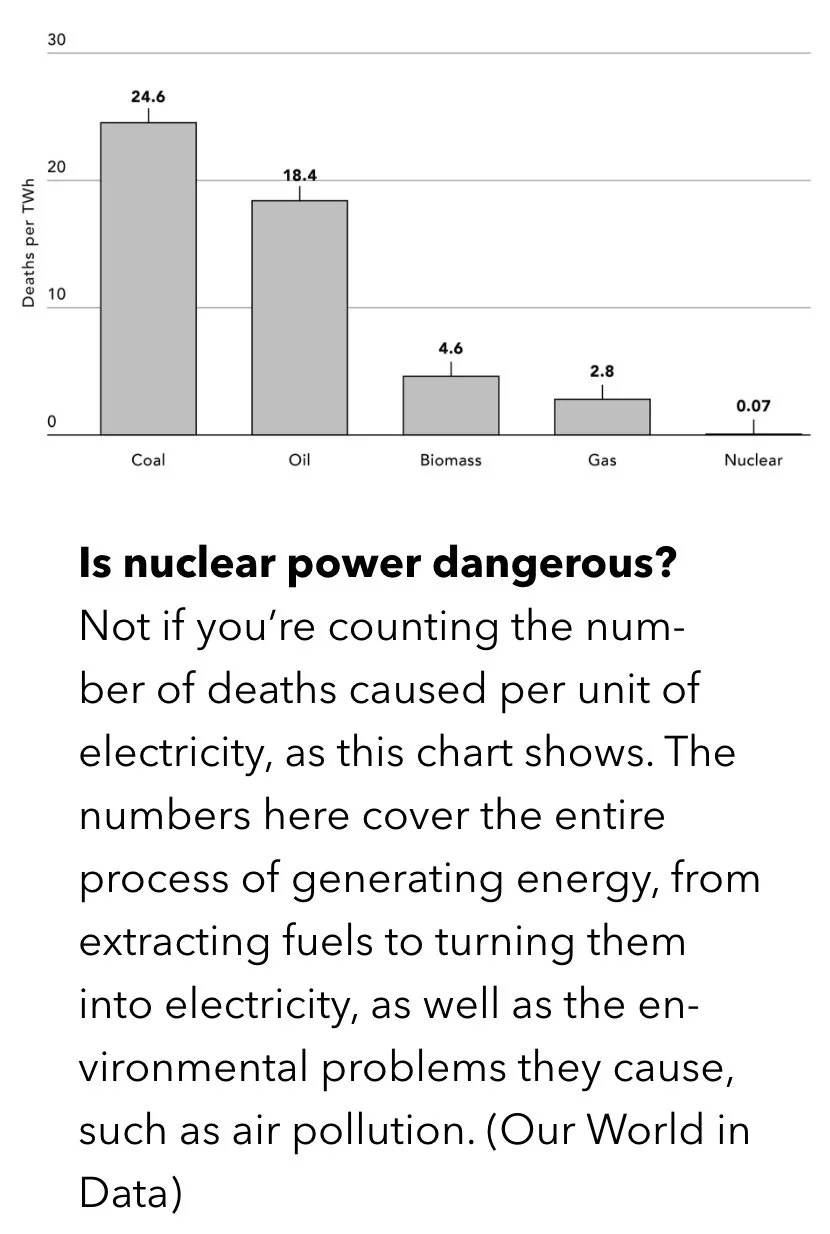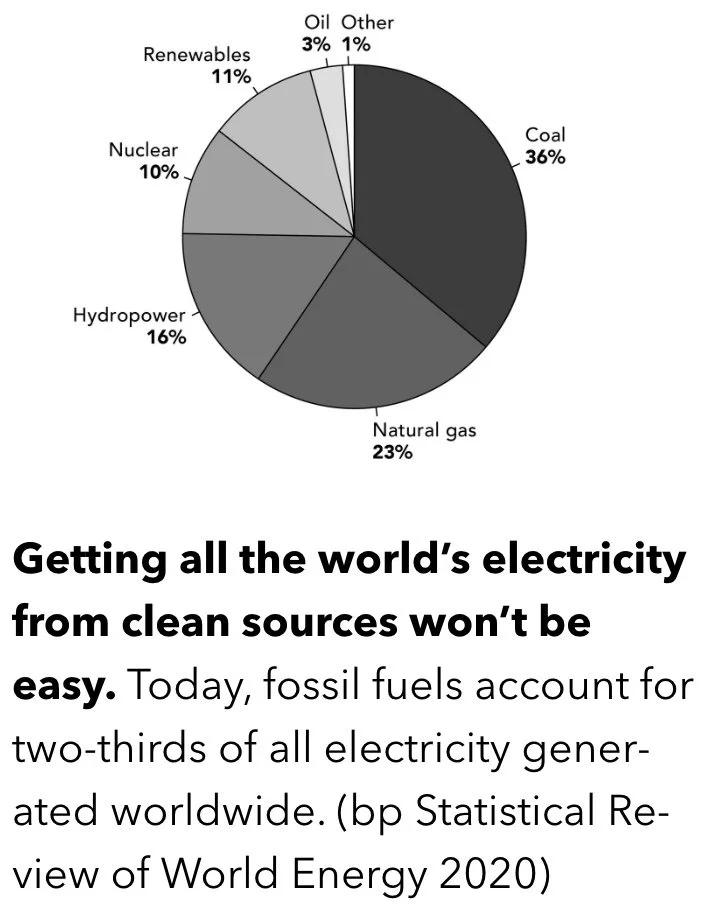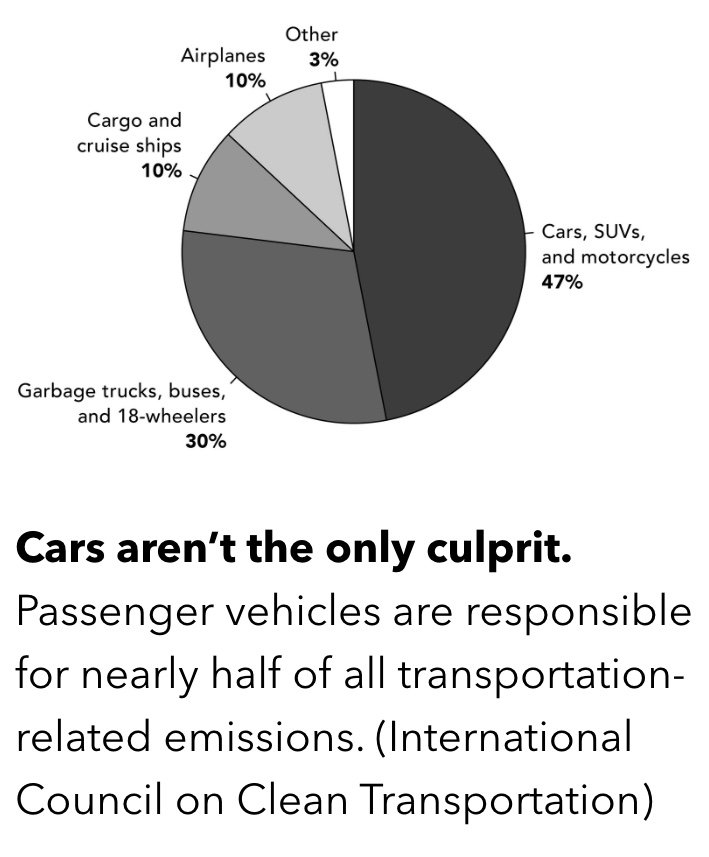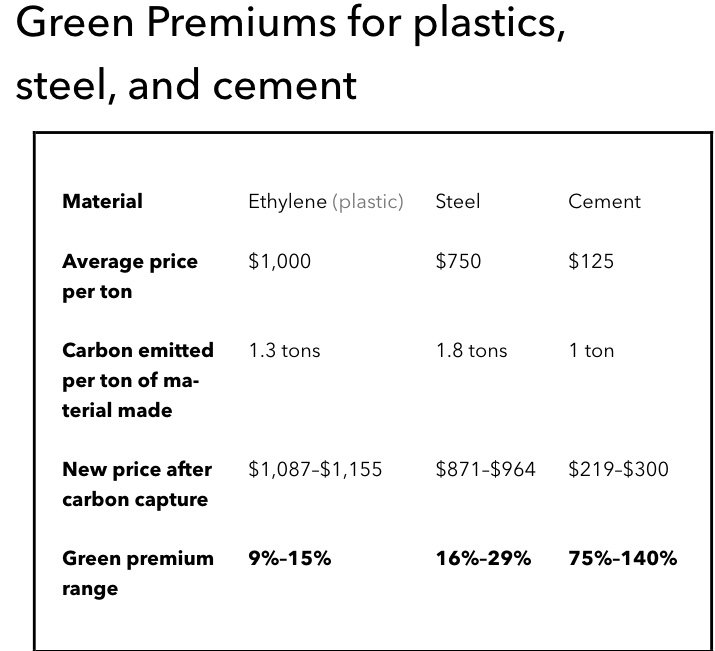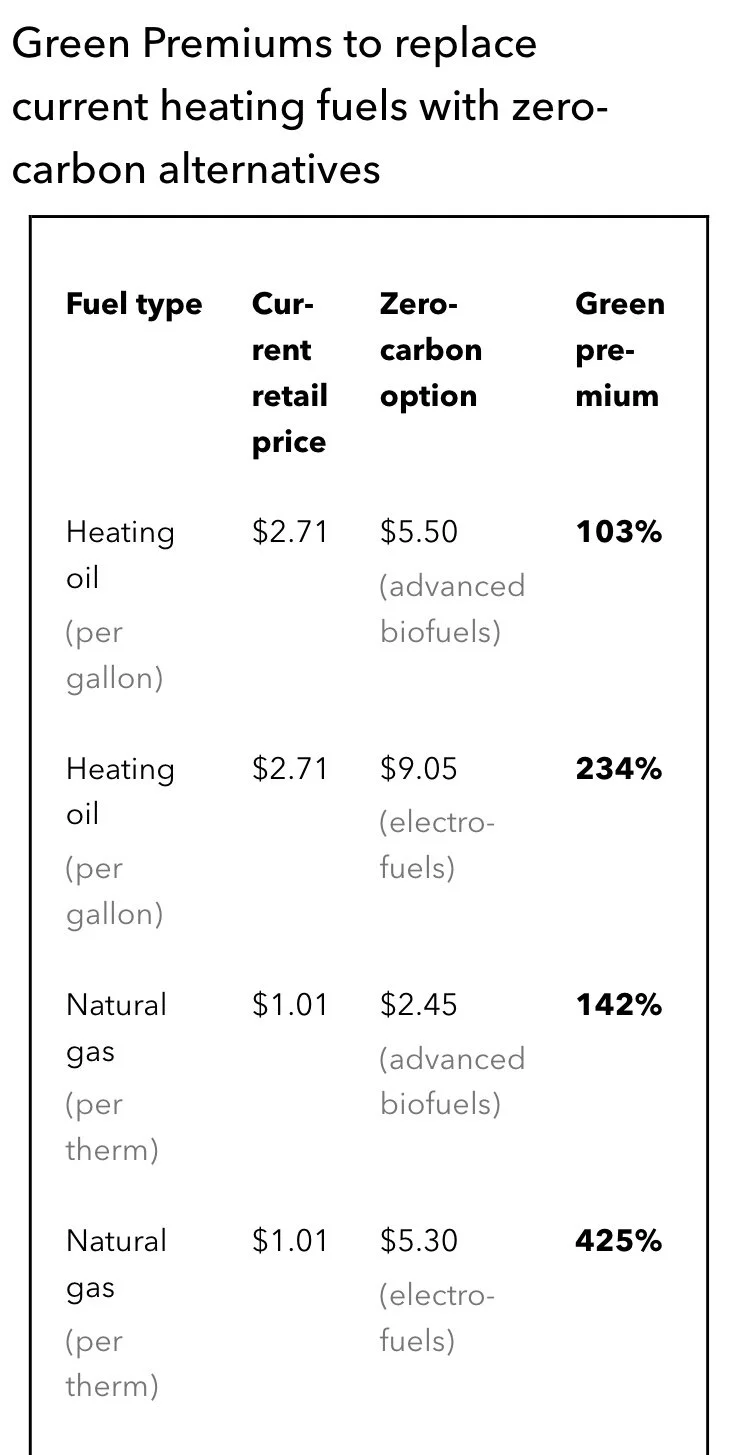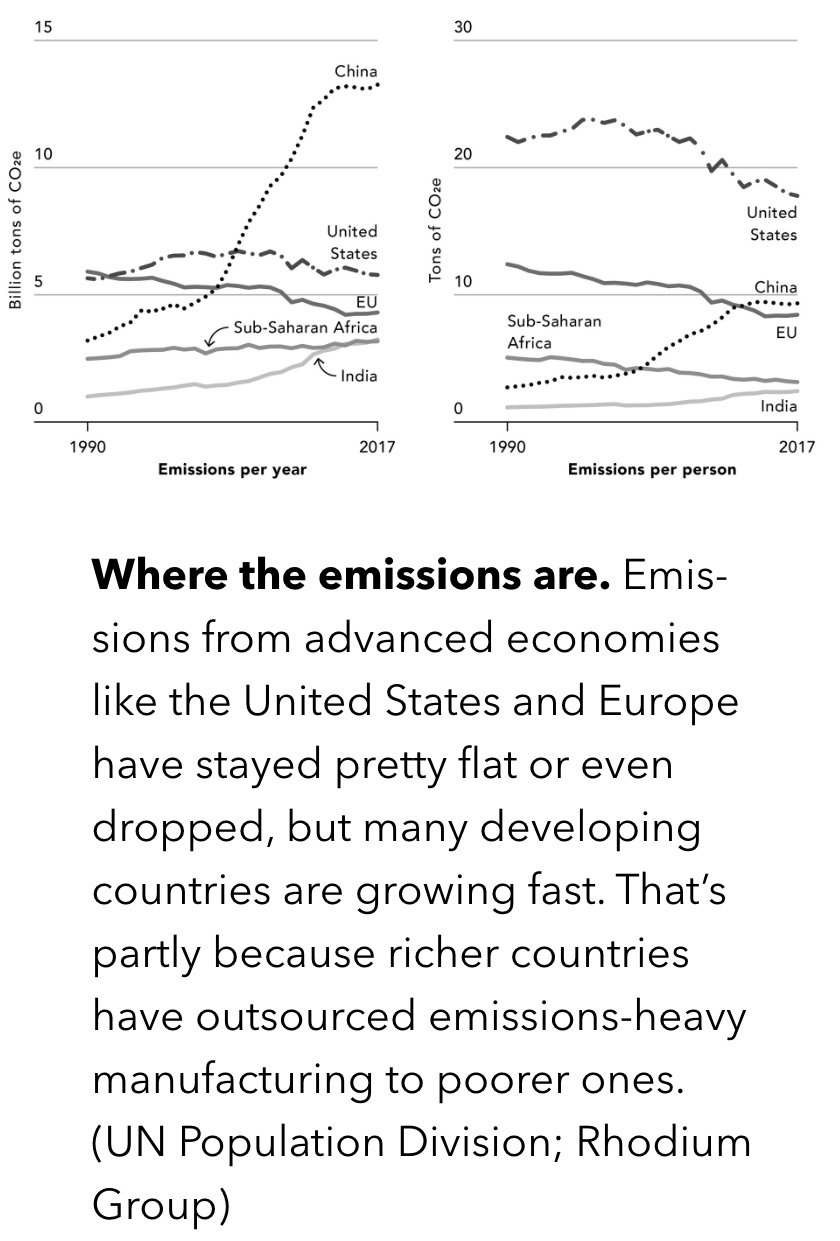How to Avoid a Climate Disaster by Gates
Ref: Bill Gates (2020). How to Avoid Climate Disaster: The Solutions We Have and the Breakthrough We Need. Allen Lane.
___________________________________________________________________________
Summary
To avoid a climate disaster, we have to get to zero. We need to deploy the tools we already have, like solar and wind, faster and smarter. And we need to create and roll out breakthrough technologies that can take us the rest of the way. We already have some of the tools we need, and as for those we don’t yet have, everything I’ve learned about climate and technology makes me optimistic that we can invent them, deploy them, and, if we act fast enough, avoid a climate catastrophe. This book is about what it will take and why I think we can do it.
The world needs to provide more energy so the poorest can thrive, but we need to provide that energy without releasing any more GHGs. The key to addressing climate change is to make clean energy just as cheap and reliable as what we get from fossil fuels. The key will be to make the clean approach as cheap—or almost as cheap—as the current technology.
How quickly do we need to get to zero? Science tells us that in order to avoid a climate catastrophe, rich countries should reach net-zero emissions by 2050. We should spend the next decade focusing on the technologies, policies, and market structures that will put us on the path to eliminating GHGs by 2050.
“Getting to zero” doesn’t actually mean “zero.” It means “near net zero.”
We have to lower the Green Premiums.
GHG Emissions by Sector
Making Things (Cement, Steel, Plastic): 31%.
Plugging in (electricity): 27%.
Growing things (plants, animals): 19%.
Getting around (planes, trucks, cargo ships): 16%.
___________________________________________________________________________
Climate Change
Whenever your car is sitting outside in the sun, your windshield lets sunlight in, then traps some of that energy. That’s why the interior of your car can get so much hotter than the outside temperature.
Sunlight is absorbed by the earth at a rate of about 240W per sq meter. There’s enough C in the atmosphere now to absorb heat at an average rate of about 2W per sq meter. So, we need to make the sun dimmer by 2/240, or 0.83%. If the amount of C in the atmosphere doubles, it would absorb heat at a rate of about 4W per sq meter, and we would need to double the dimming to about 2%.
Atmospheric Change
Hotter air can hold more moisture, and as the air gets warmer, it gets thirstier, drinking up more water from the soil. By the end of the century, soils in the SW USA will have 10-20% less moisture, and the risk of drought there will go up by at least 20%.
Ocean Change
Sea Level Rise due to polar ice melting and seawater expansion when it gets warmer.
Not only are the seas getting warmer, they’re also bifurcating—developing some places where the water has more O and others where it has less O.
If temperature rises by 2 degrees Celsius, coral reefs could vanish completely, destroying a major source of seafood for more than a billion people.
Biodiversity Change
A rise of 2 degrees Celsius would cut the geographic range of vertebrates by 8%, plants by 16%, and insects by 18% (IPCC).
Land Change
On the one hand, wheat and many other plants grow faster and need less water when there’s a large amount of C in the air. On the other hand, corn is especially sensitive to heat, and it’s the number one crop in the United States, worth more than $50B a year.
The growing season will get shorter.
Food prices could rise by 20% or more.
Forest Fires: Warm air absorbs moisture from plants and soil, leaving everything more prone to burning.
Geopolitical
One study that looked at the relationship between weather shocks and asylum applications to the European Union found that even with moderate warming, asylum applications could go up by 28%, to nearly 450K a year, by the end of the century.
Models suggest that climate change in 2030 will cost between 0.85-1.5% of America’s GDP per year.
___________________________________________________________________________
Greenhouse Gases (GHGs)
GHGs trap heat, causing the average surface temperature of the earth to go up. The more gases there are, the more the temperature rises. And once GHGs are in the atmosphere, they stay there for a very long time; something like one-fifth of the CO2 emitted today will still be there in 10K years.
We emit GHGs (1) when we use fossil fuels to generate the electricity that factories need to run their operations; (2) when we use them to generate heat needed for different manufacturing processes and (3) when we actually make these materials. For pretty much all materials, the first thing we need is reliable clean electricity
The world typically adds 51B tons of GHGs every year. Zero is what we need to aim for.
Molecules with two copies of the same atom (N2, O2) let radiation pass straight through them.
Carbon Dioxide (CO2): The most common GHG.
Fluorides: Man-made gases used in a range of industrial applications.
Methane (CH4): The main ingredient in natural gas; 28x per molecule more warming than CO2 but with a relatively smaller resident time in the atmosphere.
Nitrous Oxide (NO2): Scavenges stratospheric ozone with an impact comparable to CFCs with human emissions, mostly from agriculture, accounting for 40% of atmospheric NO2; 265x per molecule more warming than CO2.
CO2 equivalent (CO2e): The combination of all GHGs.
___________________________________________________________________________
Challenges
Between basic research, drug development, regulatory approval to test the drug, and every other step required, it takes years for a new medicine to reach patients.
Many of the environmental laws and regulations in place today weren’t designed with climate change in mind. They were adopted to solve other problems, and now we’re trying to use them to reduce emissions.
Global cooperation is notoriously difficult.
How do we solve the free-rider problem?
___________________________________________________________________________
Climate Change Questions
Convert tons of emissions to a percentage of 51B. Remember that we need to find solutions for all five activities that emissions come from: making things, plugging in, growing things, getting around, and keeping cool and warm. KW = house. GW = mid-size city. 100s GW= big, rich country. Consider how much space you’re going to need. Keep the Green Premiums in mind and ask whether they’re low enough for middle-income countries to pay.
How Much of the 51B Tons Are We Talking About?
Whenever you see some number of tons of GHGs, convert it to a percentage of 51B.
What’s Your Plan for Cement?
Remember that emissions come from five different activities, and we need solutions in all of them.
How Much Power Are We Talking About?
Watt= Joule per second.
Think of it like this: If you were measuring the flow of water out of your kitchen faucet, you might count how many cups came out per second. Measuring power is similar, only you’re measuring the flow of energy instead of water. Watts are equivalent to “cups per second.”
A nuclear plant runs 24h a day and is shut down only for maintenance and refueling. But the wind doesn’t always blow and the sun doesn’t always shine, so the effective capacity of plants powered by wind and solar panels might be 30% or less. On average, they’ll produce 30% of the gigawatt you need.
Whenever you hear “KW,” think “house.” “GW,” think “city.” 100+ GW, think “big country.”
How Much Space Do You Need?
Power Density: How much power you can get from different sources for a given amount of land; measured in Watts per square meter.
If someone tells you that some source (wind, solar, nuclear, whatever) can supply all the energy the world needs, find out how much space will be required to produce that much energy.
How Much Is This Going to Cost?
The average retail price for a gallon of jet fuel in the United States over the past few years is $2.22. Advanced biofuels for jets, to the extent they’re available, cost on average $5.35 per gallon. The Green Premium for zero-carbon fuel, then, is the difference between these two prices, which is $3.13. That’s a premium of more than 140 percent.
Depending on where you live, you may be able to save money by replacing your natural gas furnace and your air conditioner with an electric heat pump.
Which zero-carbon options should we be deploying now? Answer: the ones with a low Green Premium, or no premium at all.
Where do we need to focus our research and development spending, our early investors, and our best inventors? Answer: wherever we decide Green Premiums are too high.
Direct Air Capture (DAC): CO2 absorption technique that blows air over a device that absorbs CO2, and then stores the gas for safekeeping; only works for CO2.
DAC ~$200 per ton. That gives us the following equation: 51B tons per year x $100 per ton = $5.1T per year.
___________________________________________________________________________
Energy
Changing America’s entire electricity system to zero-C sources would raise average retail rates by between 1.3-1.7 cents per KWh, roughly 15% more than what most people pay now. That adds up to a Green Premium of $18 a month for the average home.
Energy transitions take a long time.
Electricity accounts for 27% of all GHG emissions.
Non-Renewables
Coal
Challenges
Between 2000 and 2018, China tripled the amount of coal power it uses.
Coal is the energy source of choice for developing nations.
Emissions from a coal plant are highly concentrated, at ~10% CO2.
Natural Gas
Oil
Challenges
The world uses > 4B gal oil daily.
Renewables
Solar
Efficiency: ~25% (Theoretical Limit ~33%).
Challenges: Intermittent; overgeneration in summer, undergeneration in winter. Requires energy storage for use at night.
Wind
Challenges: Intermittent; Peaks in the spring with lows in Mid-late summer by a factor of 2-4x (opposite in CA).
Worldwide
USA: ~30MW offshore in one project off the coast of RI.
Geothermal: Energy produced as HP water is pumped into rocks in the ground, where it absorbs heat that rises as steam to spin a turbine.
Pumped Hydro: Energy produced as water is released downhill spinning a turbine; water is then pumped back uphill using cheap energy. The biggest form of grid-scale electricity storage in the world.
Nuclear Fission: Energy produced from the splitting of heavy radioactive elements that heats surrounding water to produce steam and spin a turbine.
Efficiency: High; operational year-round, day and night.
Worldwide:
USA: ~20% from Fission.
France: ~70% from Fission.
Nuclear Fusion: Energy produced from the fusing of electrically charged H isotopes that heats surrounding water producing steam to spin a turbine. Requires temperatures in excess of 50M degrees Celsius at which particles are moving so fast they fuse together, becoming He. The hot plasma is most commonly contained by using magnets or lasers. It takes so much energy to kick off the fusion reaction that you often end up putting more into the process than you get out of it.
Fuel Cell: Produces Energy through a chemical reaction between H and O, producing water as a byproduct.
Electrolysis: The process of making H using various materials, known as electrolyzers.
Generation & Transmission
Generation: How much electricity we actually get, after accounting for intermittency, maintenance, efficiency, &c.
Capacity: Measures how much electricity we’re theoretically capable of producing.
Power (Watts): The rate of flow of electricity.
Kilowatt-hour (KWh): A unit of energy that’s used to measure how much electricity you use in a given time period. If you consume 1KW for an hour, you’ve used 1 KWh. The typical U.S. household uses 29 KWh a day.
We use high-voltage transmission lines to deliver electricity from the power plant to the city. Then the electricity goes into the local, lower-voltage distribution system. Transmission and distribution are responsible for more than a third of the final cost of electricity.
High Voltage Current: Used in special long-distance power lines to reduce electricity loss.
Burying power lines increases the cost by 5-10x; the problem is heat: Power lines get hot when there’s electricity running through them. That’s no problem when they’re aboveground—the heat just dissipates into the air—but underground there’s no place for the heat to go. If the temperature gets too high, the power lines melt.
Batteries
Battery Storage Math: 1KWh battery costs $100 and can go through 1,000 charge-discharge cycles.
Capital Costs= 1KWh/$100 spread out over 1,000 cycles= $.1/KWh.
Energy Cost= $.05/KWh (solar)
Total Cost for battery storage= $.15/KWh
Grid-Scale Batteries: Batteries that store enough energy for a city.
The 10 largest facilities in the USA can store <1h worth of the country’s electricity consumption.
Thermal Storage: Use of cheap electricity to heat up a material and then, when demand is high, use the heat to generate power via a heat engine; works at 50-60% efficiency.
One approach is to store the heat in molten salt.
Li-Ion
Pound for pound, the best Li-ion battery available today packs 35x less energy than gasoline. In other words, to get the same amount of energy as a gallon of gas, you’ll need batteries that weigh 35x more than the gas.
Despite all the limitations of Li-ion batteries, it’s hard to improve on them.
Energy Solutions
Make clean energy so cheap that every country would choose it over fossil fuels.
Load Shifting (Demand Shifting): Generating power more efficiently throughout the day, such as when it’s cheapest to generate.
Join up Energy Grids; models show that regional and national approaches to transmission—rather than leaving each state to its own devices—would allow every state to meet the emission-reduction goals with 30% fewer renewables than they would need otherwise.
Fund long Duration Energy Storage.
Renewable Portfolio Standard: Requiring electrical utilities to get a certain percentage of their electricity from renewable sources.
Home
Replace your incandescent lightbulbs with LEDs.
Install a smart thermostat.
Insulate your windows.
Buy efficient appliances.
Replace your heating and cooling system with a heat pump.
Sign up for a green pricing program with your electric utility.
Buy an eV.
___________________________________________________________________________
Construction
By 2060, the world’s building stock—a measure of the number of buildings and their size—will double.
Steel: Comprised of predominantly Fe from Iron Ore with <1% C from coal. The O is separated from the Iron while the C is added simultaneously by melting the Iron Ore at high temperatures (1700 degrees Celsius), in the presence of O and a type of coal called coke. At those temperatures the Iron ore releases the O and the coke releases its C. The byproduct, CO2, is released in the process; 1 ton of steel produces ~1.8 tons of CO2.
By 2050 the world will be producing ~2.8B tons every year. That adds up to 5B tons of CO2 released every year by mid-century, just from making steel.
Concrete: A mix of gravel, sand, water, and cement (CaO2); produces ~4B tons CO2e annually.
Limestone (CaCO3) + Heat (furnace) = CaO2 (Cement) + CO2
1 ton of cement produces ~1 ton of CO2.
Plastics: Comprised of polymers with long chains of repeating Hydrocarbons and made by refining oil, coal, or natural gas and then processing the refined product in various ways. There are ~2 dozen types of plastic including the polypropylene in yogurt containers, the acrylic in paint, floor polish, and laundry detergent, the microplastics in soap and shampoo, the nylon in your waterproof jacket, and the polyester in clothing.
C bonds easily with a wide variety of different elements; in plastics, it’s usually clustered with H and O.
When we make a plastic, ~50% of the C stays in the plastic and can take hundreds of years to degrade.
Construction Solutions
Electrify: Get electricity for construction purposes from a decarbonized power gride.
Molten Oxide Electrolysis: Instead of burning Fe in a furnace with coke, pass electricity through a cell that contains a mixture of liquid FeO2 and other ingredients. The electricity causes the FeO2 to break apart, leaving you with the pure Fe you need for steel, and pure O as a by-product.
Cement: Make cement out of seawater and the CO2 captured from power plants.
Use low Emission Cement.
Use low Emissions Steel.
___________________________________________________________________________
Agriculture, Forestry, and Other Land Use
With agriculture, the main culprit is CH4- which causes 28x more warming per molecule than CO2 over the course of a century—and NO2, which causes 265x more warming. Each year’s emissions of CH4 and nitrous oxide are the equivalent of more than 7B tons of CO2, or more than 80% of all the GHGs in this ag/forestry/land use sector.
Without synthetic fertilizer, the world’s population would be ~40-50% smaller than it is.
Accounting for land-use changes, the American-style diet is responsible for almost as many emissions as all the energy Americans use in generating electricity, manufacturing, transportation, and buildings (World Resources Institute).
Conundrum: We need to produce much more food than we do today, but if we keep producing it with the same methods we use now, it will be a disaster for the climate.
Livestock
A chicken has to eat two calories’ worth of grain to give us one calorie of poultry—that is, you have to feed a chicken 2x as many calories as you’ll get from the chicken when you eat it. A pig eats 3x as many calories as we get when we eat it. For cows, it’s 6x the feed for every calorie of beef. In other words, the more calories we get from these meat sources, the more plants we need to grow for the meat.
When poop decomposes, it releases a mix of GHGs—mostly NO2, some CH4, S, and NH3. About half of poop-related emissions come from pig manure, and the rest from cow manure. There’s so much animal poop that it’s actually the second-biggest cause of emissions in agriculture, behind enteric fermentation.
Cattle
Around the world, there are roughly a billion cattle raised for beef and dairy. The CH4 they belch and flatulate every year has the same warming effect as 2B tons of CO2, accounting for about 4% of all global emissions.
Cattle in S. America emit up to 5x more GHGs than ones in N. America. African Cattle emit even more. If a cow is being raised in North America or Europe, it’s more likely to be an improved breed that converts feed into milk and meat more efficiently.
Fertilizer: Provides plants with essential nutrients, including P, K, N.
Most plants can’t make their own N; instead, they get it from NH3 in the soil, where it’s created by various microorganisms. A plant will keep growing as long as it can get N, and it’ll stop once the N is all used up.
Microorganisms that make N expend a lot of energy in the process. So much energy, in fact, that they’ve evolved to do it only when they absolutely need to—when there’s no N in the soil around them. If they detect enough N, they stop producing it so they can use the energy for something else. So when we add synthetic fertilizer, the natural organisms in the soil sense the N and stop producing it on their own.
Worldwide, crops take up less than half the N applied to farm fields. The rest runs off into ground or surface waters, causing pollution, or escapes into the air in the form of NO2.
Fertilizers were responsible for ~1.3B tons of GHG emissions in 2010.
In poor countries most farmers don’t have good enough credit to buy fertilizer.
Deforestation
Nigeria, which has had one of the highest deforestation rates in the world, has lost more than 60% of its forest cover since 1990, and it’s one of the world’s biggest exporters of charcoal, created by charring wood.
People cut down trees not because people are evil; they do it when the incentives to cut down trees are stronger than the incentives to leave them alone.
How much CO2 can a tree absorb in its lifetime? It varies, but a good rule of thumb is 4 tons over the course of 40 years. How long will the tree survive? If it burns down, all the CO2 it was storing will be released into the atmosphere.
Afforestation
Trees in snowy areas cause more warming than cooling, because they’re darker than the snow and ice beneath them and dark things absorb more heat than light things do. On the other hand, trees in tropical forests cause more cooling than warming, because they release a lot of moisture, which becomes clouds, which reflect sunlight. Trees in the midlatitudes—between the tropics and the polar circles—are more or less a wash.
Waste
In Europe, industrialized parts of Asia, and sub-Saharan Africa, more than 20% of food is simply thrown away, allowed to rot, or otherwise wasted. In the USA, it’s 40%.
Rotting food produces enough CH4 to cause as much warming as 3.3B tons of CO2 each year.
Agri/Forestry/Land Use Solutions
Spread improved breeds of livestock, especially crossbreeding of African cows to be more productive and making higher-quality feed available and affordable.
Reduce Meat Consumption
Plant- Based Meats
On average, a ground-beef substitute costs 86% more than the real thing.
Cell- Based Meat (aka Cultivated Meat, Clean Meat): Lab grown meat; start with a few cells drawn from a living animal, let those cells multiply, and then coax them into forming all the tissues we’re used to eating.
Waste Less Food
Invisible, plant-based coatings that extend the life of fruits and vegetables.
Smart bin’s that uses image recognition to track how much food is wasted in a house or business.
3-Nitrooxypropanol: Given daily to cows; reduces CH4 emissions by 30%.
Mangroves: Short trees that grow along coastlines adapted to living in salt water. They reduce storm surge, prevent coastal flooding, and protect fish habitats; accounting for some $80B a year in losses from floods, and they save billions more in other ways.
Wastewater Reclamation
Just-In-Time Irrigation
Ensure rural communities have different economic opportunities so they don’t have to extract natural resources just to survive.
___________________________________________________________________________
Transportation
Transportation: Emits ~8.2B tons CO2e annually.
Maritime Shipping: Handles 90% of the goods traded around the world by volume, producing ~3% of global emissions.
Bunker Fuel: The fuel used in container ships, made from the dregs of the oil-refining process.
Cars
There are ~1B cars on the road with an average life span of ~13y before entering a junkyard.
Electric Vehicles: Although still the pricier option today, the difference has decreased dramatically, largely due to an 87% decrease in the cost of batteries since 2010.
In parts of Europe, gas prices are so high that the Green Premium for EVs has already reached zero.
CA has committed to buying only electric buses by 2029 and to banning the sale of gas-powered cars by 2035.
Gasoline
Corn-based Ethanol: Low C gasoline made from corn.
Hydrocarbon Fuels: Zero C electricity made by combining the H in H2O with the C in CO2.
A typical US household spends around $2K a year on gasoline.
Air Travel
The best all-electric plane on the market can carry two passengers, reach a top speed of 210mph, and fly for 3h before recharging. Meanwhile, a mid-capacity Boeing 787 can carry 296 passengers, reach up to 650mph and fly for nearly 20h before stopping for fuel.
Transportation Solutions
Electrify every process possible; get electricity from a decarbonized power grid.
Adopt policies that encourage people to buy EVs.
Create a network of charging stations so EVs are more practical to own.
Explore Nuclear-powered container ships.
Use cheap alternative fuels where EVs are impractical.
___________________________________________________________________________
Heating & Cooling
Air Conditioning: Contains refrigerants, known as F-gases, that leak out little by little over time as the AC unit ages.
F-gases cause thousands of times more warming than an equivalent unit of CO2; ~3% of US emissions.
In a typical American home, your AC is the biggest consumer of electricity
Furnace/Water Heater: Account for a third of all emissions from the world’s buildings.
Heating & Cooling Solutions
Electrify: Get rid of natural gas water heaters and furnaces.
Electric Heat Pump: Replace your electric AC and gas (or oil) furnace with an electric heat pump.
Smart Glass: Automatically turns darker when the room needs to cool and lighter when it needs to warm.
Energy Saving Building Regulation & Design.
Good insulation, triple glazed windows, and efficient doors that allow minimal air to leak in/out.
Cooling Centers: Facilities where people can go to escape the heat.
___________________________________________________________________________
—Markets, Technology, and Policy—
Markets, technology, and policy are like three levers that we need to pull in order to wean ourselves from fossil fuels. We need to pull all three of them at the same time and in the same direction. When we focus on technology, policies, and markets—we can encourage innovation, spark new companies, and get new products into the market fast.
In the longer term, as we get closer to net-zero emissions, the C price could be set at the cost of DAC.
___________________________________________________________________________
Role of Markets
Business Role
Landlords should allow tenants to upgrade their buildings with more efficient appliances.
Maersk has said it will cut its net emissions to zero by 2050.
___________________________________________________________________________
Role of Technology
Conundrum: As people rise up the income ladder, they do more things that cause emissions. This is why we need innovations—so the poor can improve their lives without making climate change even worse.
Technologies Needed
H produced without emitting C
Grid-scale electricity storage that can last a full season
Electrofuels
Advanced biofuels
Zero-carbon cement
Zero-carbon steel
Plant- and cell-based meat and dairy
Zero-carbon fertilizer
Next-generation nuclear fission
Nuclear fusion
C capture (both DAC & point capture)
Underground electricity transmission
Zero-C plastics
Geothermal plastics
Pumped hydro
Thermal storage
Drought- and flood-tolerant food crops
Zero-C alternatives to palm oil
Coolants that don’t contain F-gases
Ideas currently in the proof phase
Low-C cement
Next-generation nuclear fission
C capture and sequestration
Offshore Wind
Cellulosic ethanol (a type of advanced biofuel)
Meat alternatives.
___________________________________________________________________________
Role of Policy
Government policies should be technology neutral, predictable, and flexible.
What we can do—and need to do—in the next 10 years is adopt the policies that will put us on a path to deep decarbonization by 2050. The things we’d do to get small reductions by 2030 are radically different from the things we’d do to get to zero by 2050. For example, if “reduce by 2030” is the only measure of success, then it would be tempting to replace coal-fired power plants with gas-fired ones; after all, that would reduce our emissions of CO2. But any gas plants built between now and 2030 will still be in operation come 2050—they have to run for decades in order to recoup the cost of building them—and natural gas plants still produce GHGs.
Local Governments: Determine how buildings are constructed and what kinds of energy they use, whether buses and police cars run on electricity, whether there’s a charging infrastructure for electric vehicles, and how waste gets managed.
State Governments: Regulate electricity, planning infrastructure like roads and bridges, and select the materials that go into these projects.
National Governments: Have authority over activities that cross state or international borders so they write the rules that shape electricity markets, adopt pollution regulations, and create standards for vehicles and fuels. They also have enormous procurement power, are the primary source of fiscal incentives, and usually fund more public R&D than any other level of government.
Government
Invest in R&D when the private sector won’t.
Regulation of industry and business C emissions.
Identify, regulate, and cost externalities.
Tax or Cap/Trade Carbon.
Provide Tax Credits & Loan Guarantees to for R&D and to bring innovative technologies to market.
Cooperate Internationally
Individual
Are political leaders focusing on the biggest sources of emissions and the toughest technical challenges? Are they talking about grid-scale energy storage, electrofuels, nuclear fusion, carbon capture, and zero-carbon cement and steel? If not, they’re not helping us get on the path to zero emissions by 2050.
Policy makers can take on only so many problems at once. And they decide what to do, what to prioritize, based on what they’re hearing from their constituents. Elected officials will adopt specific plans for climate change if their voters demand it.
Make calls, write letters, attend town halls.
Look locally as well as nationally. A lot of the relevant decisions are made at the state and local levels by governors, mayors, state legislatures, and city councils—places where individual citizens can have an even bigger impact than at the federal level.
Global Successes
Denmark: The Danes paired their R&D support with a feed-in tariff and, later, a C tax.
USG
R&D: Research grants, loan programs, tax incentives, laboratory facilities, pilot programs, public-private partnerships, and more.
DoE: Central Role in implementing a federal clean electricity standard.
EPA: Design and implement an expanded clean fuel standard.
The Federal Energy Regulatory Commission: Oversees wholesale electricity markets and interstate transmission and pipeline projects; would regulate the infrastructure and market elements of a plan.
Dept of Agriculture: Works on land use and agricultural emissions.
DoD: Purchases low-emissions fuels and materials.
National Science Foundation: Funds research.
DoT: Funds Roads and Bridges.
___________________________________________________________________________
Adaptation
Climate Change adaptation is accomplished in three stages:
Reduce the risks posed by climate change.
Prepare for and respond to emergencies.
Post Disaster Recovery: Plan for services for people who’ve been displaced.
___________________________________________________________________________
Climatology
The mid-18th century or so—the earth’s C cycle was probably roughly in balance; that is, plants and other things absorbed about as much CO2 as was emitted.
During the last ice age, the average temperature was just 6 degrees Celsius lower than it is today. During the age of the dinosaurs, when the average temperature was perhaps 4 degrees Celsius higher than today, there were crocodiles living above the Arctic Circle.
___________________________________________________________________________
Misc Quotes
The most obvious, ubiquitous, important realities are often the ones that are the hardest to see and talk about.
To absorb the emissions produced by an average American in their lifetime, you’d need ~50 acres worth of trees, planted in the Tropics.
When we have a fact-based worldview, we can see that the world is not as bad as it seems—and we can see what we have to do to keep making it better.-Hans Rosling.
Nearly 40% of the world’s emissions are produced by the richest 16% of the population.
Since 1990 the level of NO2 in American emissions has dropped by 56%, CO by 77%, and sulfur dioxide by 88%.
Extreme poverty has plummeted in the past quarter century, from 36% of the world’s population in 1990 to 10% in 2015.
Temperatures will not stop rising in Texas unless emissions stop rising in India.
___________________________________________________________________________
People
Norman Borlaug (1914-2009): American agronomist and 1970 Nobel Prize Winner; sparked a revolution in agriculture by developing varieties of wheat with bigger grains and other characteristics that allowed them to provide much more food per acre of land. Borlaug found that as he made the grains bigger, the wheat couldn’t stand up under their weight, so he made the wheat stalks shorter. As Borlaug’s semi-dwarf wheat spread around the world, and as other breeders did similar work on corn and rice, yields tripled in most areas. Starvation plummeted, and today Borlaug is widely credited with saving a billion lives.
___________________________________________________________________________
Resources
Air Water Generation (AWG): Taking water out of the air; ideally with a solar-powered dehumidifier and an advanced filtering system so you don’t drink air pollution.
Blue-Sky: Conducts research into novel scientific concepts (also called basic research) and efforts to take scientific discoveries and make them useful (what’s known as applied or translational research).
Breakthrough Energy: Comprised of philanthropic programs, advocacy efforts, and private funds that have invested in more than 40 companies with promising ideas. Funds only technologies that could remove at least 500M tons a year if they’re successful and fully implemented.
CGIAR: Previously the Consultative Group for International Agricultural Research. Today, a network of 15 independent research centers; together the world’s largest agricultural research group that helps create better plants and better animal genetics.
CGIAR-affiliated experts have gone on to develop other maize varieties that grow well in poor soils; resist diseases, pests, or weeds; raise crop yields by up to 30%; and help fight malnutrition.
Developed “scuba” rice that can survive underwater for two weeks. Generally, rice plants respond to flooding by stretching out their leaves to escape the water; if they’re underwater long enough, they expend all their energy trying to escape, and they essentially die of exhaustion. Scuba rice doesn’t have that problem: It’s got a gene called SUB1 that kicks in during a flood, making the plant dormant—so it stops stretching—until the waters recede.
Direct Air Capture (DAC): CO2 absorption technique that blows air over a device that absorbs CO2, and then stores the gas for safekeeping; only works for CO2.
Energiewende: A German energy program with a goal of 60% renewables by 2050.
Gates Foundation: Focused on global health, development, and U.S. education.
Motto: “Everyone deserves the chance to live a healthy and productive life.”
The Gates Foundation’s whole approach to saving lives is based on the idea that we need to be pushing innovation for the poor while also increasing demand for it.
Geoengineering: Make temporary changes in the earth’s oceans or atmosphere that lower the planets temperature by reducing the sunlight hitting the earth by ~1%.
AgNO3: Distributing extremely fine particles in the upper atmosphere to scatter sunlight and cause cooling.
Cloud Brightening: Use of salt sprays that cause clouds to brighten, scattering the sunlight striking the tops of clouds to cool the earth.
Human Genome Project (HGP): Designed to map the complete set of human genes and make the results available to the public, it was a landmark research project led by the U.S. DOE & NIH, with partners in the U.K., France, Germany, Japan, and China. The project took 13y and billions of dollars.
ITER (‘eater’): An experimental fusion reactor project located in S. France that is shared by 6 countries and the EU.
Mission Innovation: 24 countries and the European Commission with $4.6B a year in new money for clean energy research.
Renewable Energy Directive (EU): The legal framework for the development of renewable energy across all sectors of the EU economy; establishes common rules and targets for the development of renewable energy.
SunShot (DoE): The US DOEs initiative that was met in 2017 to drive down the cost of solar energy to $.06 per KWh by focusing on early-stage R&D and encouraging private companies, universities, and national laboratories to concentrate on efforts like lowering the cost of solar-power systems, removing bureaucratic barriers, and making it cheaper to finance solar powered systems.
TransWest Express: A transmission project designed to move wind-generated power from WY to CA and the SW; scheduled to be operational in 2024.
Traveling Wave Reactor: A fully automated prototype nuclear reactor that produces far less waste than modern reactors and can be built underground, protecting it from attack.
U.S. Climate Alliance: Commits to meet the Paris Agreement goals of reducing emissions by at least 26% by 2025.
___________________________________________________________________________
Terminology
Adaptation: Minimize the impact of the changes that are already here and that we know are coming.
Dry weather Flooding: Rise of seawater through storm drains.
Electrification (Electrify): The technique of using electricity instead of fossil fuels for some industrial processes.
Enteric Fermentation: Bacterial breakdown and fermentation of cellulose in plants and grasses that produces CH4.
Externality: An expense that’s borne by society rather than the person or business who’s responsible for it.
Green Premium: The additional cost (premium) for utilizing a non-C (green) technology over a C-technology.
Heat Pump: Take advantage of the fact that gases and liquids change temperature as they expand and contract. The pumps work by moving some coolant through a closed loop of pipes, using a compressor and special valves to change the pressure along the way so that the coolant absorbs heat from one place and gets rid of it somewhere else. In the winter, you move heat from outdoors into your home (this is possible in all but the very coldest climates); in the summer, you do the opposite, pumping heat from inside your house to the outdoors.
Innovation: Development of new devices and new ways of doing things.
Mitigation: Stop adding GHGs to the atmosphere.
Scale Up Phase: Rapid, large-scale deployment of technology; begins when cost is low enough, supply chains and business models are well developed, and consumers have shown that they’ll buy what you’re selling.
Smallholder Farmers: Farmers with less than four acres of land.
Stunting: Not fully developing physically or mentally.
Technophile: ‘Show me a problem, and I’ll look for technology to fix it.’
___________________________________________________________________________
Chronology
2020: Global CO2e emissions drop by ~5% due to the COVID-19 pandemic.-Climate by Gates.
2019: IPO for Beyond Meat.-Climate by Gates.
2019: The US first exports more energy than it imports for the first time in nearly 70 years.-Climate by Gates.
2016: Representatives from 197 countries commit to reducing the production and use of certain F-gases by >80% by 2045.-Climate by Gates.
2014: China launches several programs in response to worsening smog in urban centers and skyrocketing levels of dangerous air pollutants, setting up targets for reducing air pollution, banning the building of new coal-fired plants near the most polluted cities, and placing limits on driving nonelectric cars in large cities. Within a few years, Beijing was reporting a 35% decline in certain types of pollution, and Baoding, a city of 11M people, was reporting a decline of 38%.-Climate by Gates.
2011: The USG finances the five biggest solar arrays in the country.-Climate by Gates.
2009: The USG passes the American Recovery and Reinvestment Act using tax credits, federal grants, loan guarantees, and R&D funding to shore up the economy and reduce emissions; the single largest investment in clean energy and energy efficiency in American history.-Climate by Gates.
2008-2010: Germany increases its solar capacity nearly 650%. The country produces 10x more solar in June than December (2018 estimates). It transmits excess to neighboring Poland & Czech Rep.-Climate by Gates.
2008: The PRC launches a $584B economic stimulus package, much goes to green projects.-Climate by Gates.
2007-2010: Syria experiences an unprecedented drought; ~1.5M people leave farming areas for the cities.-Climate by Gates.
1993: The USA raises the federal gas tax.-Climate by Gates.
1975: Micro-Soft (later changed to Microsoft) is founded by Paul Allen and Bill Gates in Albuquerque, NM. They move to Seattle 4 years later in 1979.-Climate by Gates.
1970: The USG under President Nixon establishes the EPA to help implement the Clean Air Act.-Climate by Gates.
1965: Moore’s Law; Gordon Moore predicts that microprocessors will double in power every two years.-Climate by Gates.
1962: The USG passes the Clean Air Act, establishing the modern regulatory system for controlling air pollution in the US.-Climate by Gates.
1955: The British enact the Clean Air Act, creating smoke-control zones throughout the country where only cleaner-burning fuels could be used.-Climate by Gates.
1955: The first microwave oven hits the market.-Climate by Gates.
1953: Introduction of Crystalline Si Solar Cells; converting from 4-15% of sunlight to electricity.-Climate by Gates.
Dec, 1952: Five days of smog cripples London, killing >4K people.-Climate by Gates.
1943: Smog first descends on Los Angeles.-Climate by Gates.
1913: The USG establishes a corporate income tax.-Climate by Gates.
1908: Haber Bosch; German Chemists Fritz Haber and Carl Bosch discern how to make NH3 from N and H in a factory.-Climate by Gates.
1908: The Model T is first introduced by Henry Ford; the T got no better than 21mpg.-Climate by Gates.
1902: The first modern air-conditioner is made in by engineer Willis Carrier, after his employer sent him to a print shop in NY to figure out how to keep the pages of magazines from wrinkling as they came off the printing press. Realizing that the wrinkles were caused by high humidity levels, Carrier designed a machine that lowered the humidity while also decreasing the temperature in the room.-Climate by Gates.
6 May, 1851: The ice machine is patented by FL physician John Gorrie, who thought cooler temperatures would help his patients recover from malaria. Gorrie set up a device that cooled off his sick ward by moving air over a big block of ice suspended from the ceiling. But the machine went through ice quickly, and ice was expensive because it had to be shipped in from the N, so Gorrie designed a machine to make it himself. He eventually received a patent for his ice maker, and he left medicine to try to market his invention.-Climate by Gates.
1789: The USG enacts America’s first protective tariff on imported coal.-Climate by Gates.
___________________________________________________________________________
